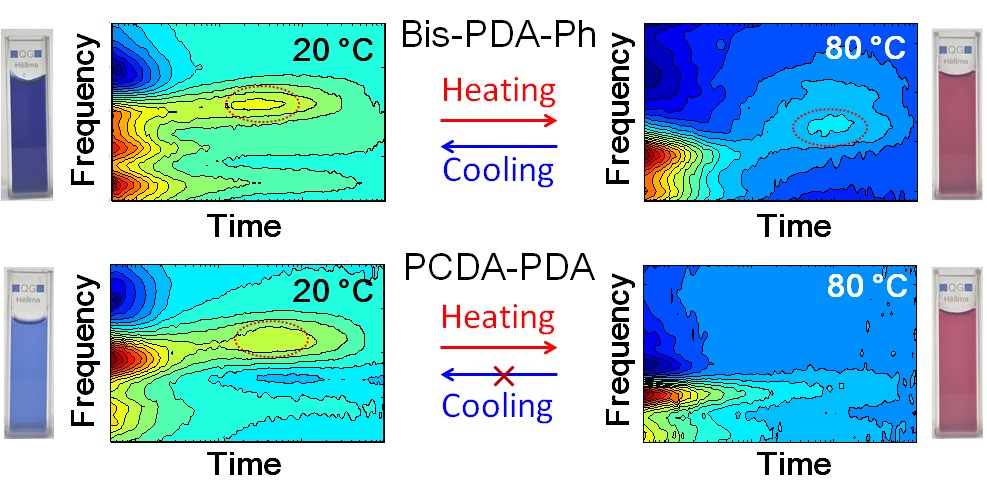Polydiacetylenes (PDAs) with thermochromic properties undergo colorimetric transitions when the external temperature is varied. This capability has the potential to enable these materials to be used as temperature sensors. These thermochromic properties of PDAs stem from their temperature-dependent optical properties. In this work, we studied the temperature-dependent optical properties of Bis-PDAPh, which exhibits reversible thermochromic properties, and PCDA− PDA, which exhibits irreversible thermochromic properties, by UV− visible absorption and femtosecond transient absorption spectroscopy. Our results indicate that the electronic relaxation of PDAs occurs via an intermediate state in cases where the material exhibits reversible thermochromic properties, whereas the excited PDAs relax directly back to the ground state when irreversible thermochromic properties are observed. The existence of this intermediate state in the electronic relaxation of PDAs thus plays an important role in determining their thermochromic properties. These results are very important for both understanding and strategically modulating the thermochromic properties of PDAs.

http://pubs.acs.org/doi/abs/10.1021/acs.jpclett.5b02671
 Diastereomeric Resolution of a Racemic Biaryl Boronic Acid an...
Diastereomeric Resolution of a Racemic Biaryl Boronic Acid an...
 Facet-controlled hollow Rh2S3 hexagonal nanoprisms as highly ...
Facet-controlled hollow Rh2S3 hexagonal nanoprisms as highly ...

















